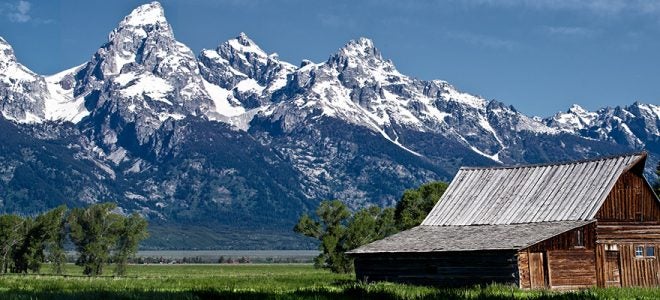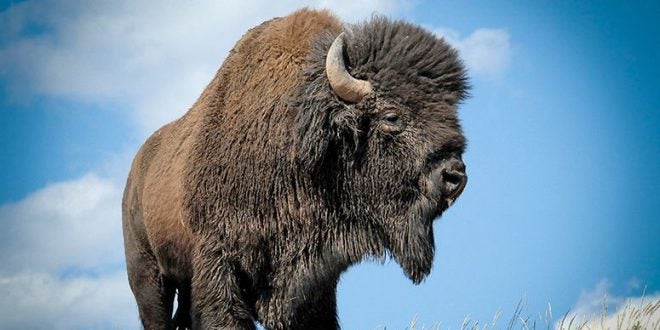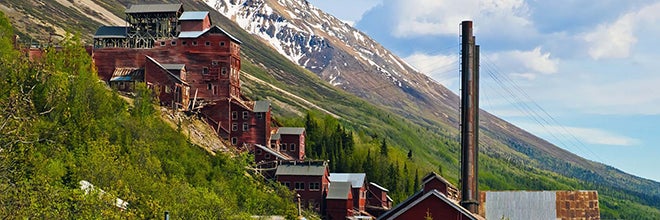
Close your eyes and then visualize a national park.
Really, do it.
You probably saw an iconic site like Yellowstone Valley or Old Faithful. Maybe you saw mountains or a desert wilderness. You might have envisioned waterfalls, forests, or wildlife.
If that’s what you did, then you were thinking about some of America’s 59 national parks, managed by the National Park Service (NPS). However, the NPS actually manages 411 parks, so your imagination left out the overwhelming majority of the park system. The NPS manages those other 352 “national park units” under the same rules as the “national parks,” but under a variety of names, for a variety of purposes.

Dr. Pahre will be in Boise for two events later this week. The Idaho Environmental Forum on Thursday, September 14 is co-sponsored by the Center for Idaho History and Politics and the Andrus Center for Public Policy.
Dr. Pahre will also discuss “Telling America’s Stories in the National Parks” at a Politics and Policy Brown Bag Series event on the Boise State campus at noon on Friday, Sept. 15.
Most of those other units are historic sites, archaeological sites, and battlefields. In other words, when you closed your eyes, a more representative scene would have included Gettysburg, Mesa Verde, or Mount Vernon. Perhaps you should have imagined an urban park like Golden Gate National Recreation Area (NRA) in the San Francisco Bay Area, Santa Monica Mountains NRA in Los Angeles, or Indiana Dunes National Lakeshore outside Chicago. National historic trails such as the Oregon National Historic Trail or the Lewis and Clark National Historic Trail could have appeared in your mind’s eye. A national monument such as Craters of the Moon or Indigenous sites such as Nez Perce National Historic Park would have been a good choice, too.
That said, you probably imagined Yellowstone instead.

Gettysburg National Military Park, photo of Battlefield Sentinel by Bill Dowling, National Park Service. Photo of Guernsey, Wyoming wagon wheel ruts, Oregon National Historic Trail by National Park Service.
PATHS TO PRESERVATION
These national park units took various routes into the national park system. National monuments such as Wyoming’s Devils Tower or New Mexico’s Capulin Volcano were proclaimed by the president under the Antiquities Act. So too were many archaeological sites such as Minnesota’s Pipestone or Louisiana’s Poverty Point. Many battlefields were under the jurisdiction of the War Department until Franklin Roosevelt moved them to the National Park Service. A fair number of historic sites were originally protected by civic groups, perhaps the local chamber of commerce, historical society, or the Daughters of the American Revolution (DAR). For example, Fort Smith, Arkansas, stemmed from the efforts of the city, civic groups, and the local member of Congress, all of whom wanted to take advantage of the reputation of Isaac “Hanging Judge” Parker to attract tourists to this outpost of the law. The DAR and other groups marked the California, Mormon Pioneer, Oregon, and Santa Fe trails well before the NPS arrived.
Despite their diversity, these national park units share an important common feature. All preserve some part of America – our country’s scenic beauty, the accomplishments of its prehistoric people, its distinctive geologic features, the birthplaces of our presidents and other major figures, places where Americans fought over the future of the country, and many other parts of our heritage.
Important as they are, these sites don’t speak for themselves. Instead, they require what the National Park Service calls “interpretation.” This interpretation makes the national park system a major educational resource, not just for school kids on field trips but also for adult lifelong learning.

Left – right: Petroglyph National Monument, photo by Transity, Wikimedia Commons. Knife River Indian Villages National Historic Site, photo by Xerxes, Wikimedia Commons. Mount Vernon National Historic Landmark, photo by Matt Briney, unsplash.com. George Washington Carver National Monument, photo by National Park Service. Minidoka National Historic Site by National Park Service.
INTERPRETING THE NATIONAL PARKS
Interpretation is particularly important for historic sites, a fact that has implications for the rest of the national park system. A scenic national park preserves resources that are significant in themselves. Great Sand Dunes National Park preserves really big sand dunes. Crater Lake National Park preserves a lake in a volcanic crater. These parks have interpretation that explains, say, why the sand dunes are here. However, visitors can enjoy sandboarding just fine without knowing how dunes are formed.
Historical sites do not speak for themselves. Why is Fort Laramie important? What’s going on at the overlook above Sand Creek Massacre? What happened at Minidoka? Homestead National Monument of America preserves the site of John Freeman’s homestead, but why? Those sites are meaningless to visitors without some explanation.
Interpreters understand this point well. Many are less aware of a second feature of historic sites – most are significant because of their impact on places outside the park. In other words, events happened at each historic site that affected American history in general. Fort Laramie was important for the Oregon Trail and for military action on the Northern Plains, for example. John Freeman’s homestead stands in symbolically for all homesteads, and the visitor center tells the story of homesteading around the country.
These sites protect a small part of a larger landscape, a point that some historic and archaeological sites make explicit. Iowa’s Effigy Mounds tells the story of the Upper Mississippi River, and points visitors to state parks and national wildlife refuges telling other parts of the region’s story. Bent’s Old Fort tells the story of the Santa Fe Trail, Mexican-American relations, and global trade patterns. Knife River Indian Villages tells of Mandan, Hidatsa, and Arikara civilization on the Upper Missouri before and after European contact, and points visitors to the Lewis and Clark National Historic Trail, Fort Union Trading Post, and other parts of the Upper Missouri historic landscape. Pea Ridge National Military Park tells the story of the Civil War in the trans-Mississippi West, including the civil wars in the Cherokee and other nations of Indian Country.

Kennecott Mines National Historic Landmark, Alaska. Photo by Bryan Petrtyl, National Park Service.
RE-INTERPRETING THE NATION’S CROWN JEWELS
The crown jewel parks could learn from this kind of interpretation at historic sites. Aside from some nods to affiliated tribes who live outside the park’s boundaries, Yellowstone’s interpretation does not place the park within a wider landscape. Instead, the visitor center makes the park appear as a sui generis Wonderland, “discovered” by Euro-American expeditions in 1870-72.
The park could situate Yellowstone in western history more broadly, perhaps along the lines of George Black’s Empire of Shadows. Black sees those expeditions as part of Montana’s history after the Civil War, a landscape of mining towns, boosterism, and conflicts with the Blackfoot and other tribes. This perspective makes the conquest of Yellowstone fit easily into the wider story of how the United States conquered the people of the frontier. It explains why “discovering” Yellowstone required organized groups of white men of a certain social class and political authority.
Aside from the Nez Perce flight through Yellowstone in 1877, none of this context appears in the park’s interpretation. Instead, Yellowstone and most other scenic national parks interpret a piecemeal history. Mormon Row in Grand Teton National Park tells about the homesteads in that community but not of Mormon expansion in the intermountain west. Guadalupe Mountains preserves and interprets three ranches but does not tell of Euro-American settlement more generally. Like many other sites, it says little of the Indigenous peoples that Euro-Americans displaced. Kennecott Mines in Wrangell-St. Elias tells of the copper mining community and its railroad, but not Alaskan mining history more generally. It does not mention the gold mine region across the Wrangell Mountains in Chisana, for example.
In other words, these parks are not simply isolated jewels in the American crown. They are parts of cultural landscapes that extend outside each park. They are important in themselves, of course, but also important for how they are connected to American history as a whole. Reimagining the national park system in a way that gives historical narrative and cultural landscapes a larger role would make those connections visible. In this way, the historical park units can help us see the crown jewel parks differently.
 Dr. Robert Pahre is Professor and Head of the Department of Political Science at the University of Illinois. After spending the first half of his career on international political economy and the European Union, he now studies and teaches environmental politics in the United States. He has a particular interest in the politics of national parks, and he takes students to Yellowstone or Colorado in alternate summers to study politics in the field. He has published books on the politics of trade and the sociology of science, as well as articles in a variety of social science journals.
Dr. Robert Pahre is Professor and Head of the Department of Political Science at the University of Illinois. After spending the first half of his career on international political economy and the European Union, he now studies and teaches environmental politics in the United States. He has a particular interest in the politics of national parks, and he takes students to Yellowstone or Colorado in alternate summers to study politics in the field. He has published books on the politics of trade and the sociology of science, as well as articles in a variety of social science journals.